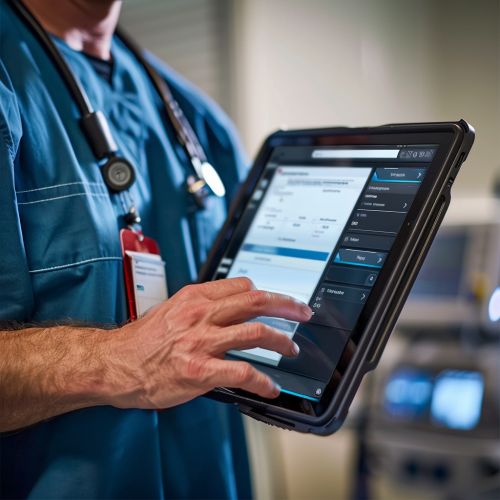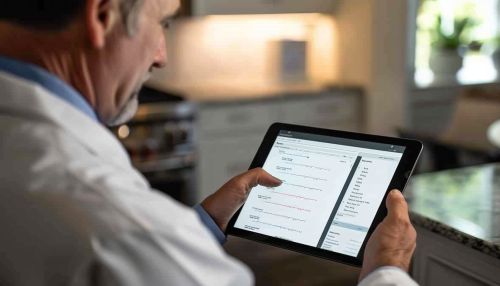Health Information Technology
Introduction
Health Information Technology (HIT) encompasses a wide range of technologies used to store, share, and analyze health information. These technologies aim to improve the quality, safety, and efficiency of healthcare delivery. HIT includes electronic health records (EHRs), health information exchanges (HIEs), telemedicine, and various other tools that facilitate the management of health data.
Historical Development
The evolution of Health Information Technology can be traced back to the mid-20th century when the first computerized systems were introduced in hospitals. Early systems were primarily used for administrative purposes, such as billing and scheduling. The 1960s and 1970s saw the development of more sophisticated systems capable of managing clinical data. The introduction of the Health Insurance Portability and Accountability Act (HIPAA) in 1996 marked a significant milestone, as it established national standards for electronic health care transactions and the security of health information.
Components of Health Information Technology
Electronic Health Records (EHRs)
EHRs are digital versions of patients' paper charts and contain comprehensive health information, including medical history, diagnoses, medications, treatment plans, immunization dates, and test results. EHRs facilitate the sharing of information among healthcare providers, improving coordination and continuity of care. They also support clinical decision-making through integrated tools such as alerts, reminders, and clinical guidelines.
Health Information Exchanges (HIEs)
HIEs enable the electronic sharing of health information across different healthcare organizations. They aim to improve the quality of care by ensuring that healthcare providers have access to accurate and up-to-date patient information. HIEs can be regional, state-based, or national, and they often operate through centralized, federated, or hybrid models.
Telemedicine
Telemedicine involves the use of telecommunications technology to provide clinical health care from a distance. It includes video consultations, remote monitoring, and mobile health applications. Telemedicine has become increasingly important in improving access to care, particularly in rural and underserved areas.
Clinical Decision Support Systems (CDSS)
CDSS are computer-based systems that assist healthcare providers in making clinical decisions. They analyze data from EHRs and other sources to provide evidence-based recommendations, alerts, and reminders. CDSS can improve patient outcomes by reducing errors and ensuring adherence to clinical guidelines.


Benefits of Health Information Technology
HIT offers numerous benefits, including improved patient care, enhanced efficiency, and reduced costs. EHRs and HIEs enable better coordination of care, reducing duplication of tests and procedures. Telemedicine expands access to care, particularly for patients in remote areas. CDSS improve clinical decision-making, leading to better patient outcomes.
Challenges and Barriers
Despite its benefits, HIT faces several challenges and barriers. These include high implementation costs, interoperability issues, and concerns about data privacy and security. The complexity of integrating different systems and ensuring that they communicate effectively remains a significant hurdle. Additionally, healthcare providers must be adequately trained to use these technologies effectively.
Regulatory and Policy Framework
The regulatory and policy framework for HIT is shaped by various laws and regulations. HIPAA sets standards for the protection of health information, while the Health Information Technology for Economic and Clinical Health (HITECH) Act of 2009 promotes the adoption and meaningful use of EHRs. The Centers for Medicare & Medicaid Services (CMS) also play a crucial role in regulating HIT through programs such as the Merit-based Incentive Payment System (MIPS).
Future Trends
The future of HIT is likely to be shaped by advancements in artificial intelligence (AI), machine learning, and big data analytics. These technologies have the potential to revolutionize healthcare by enabling more precise and personalized care. Blockchain technology is also being explored for its potential to enhance data security and interoperability.
See Also
- Electronic Health Record
- Telemedicine
- Health Information Exchange
- Clinical Decision Support System
- Health Insurance Portability and Accountability Act
- Health Information Technology for Economic and Clinical Health Act
